
I won’t bullshit you. The publishing industry is changing fast, and what to do is confusing. Like a bar magnet, the industry has two strong poles: traditional publishing and self-publishing. If you’re antsy for what to do, skip over the following history. If you don’t know the history, it’s worth reading and understanding. A few months back, I wrote about marketing a literary book. This is more inclusive.
HISTORY
Traditional publishing is the way things have gone, more or less, for the last one hundred years. An author writes a book, and when it’s done, he or she wins over an agent, who wins over an editor at a publishing company, who wins over a handful of decision-makers at the company, and the publishing company agrees to publish you. You get part of an advance on signing, more of an advance after working hand-in-hand with a company editor, and you get the rest of your advance on publication day.
Mid-size and big publishers have sales teams, which contact bookstores and often meet bookstore owners. The sales people get the stores to order, and books that don’t sell right away can be returned.
If everything goes well, it typically takes about two years from the time your agent starts submitting it until you hit publication day. If you’re like most authors, you’ll get a modest advance (about $5,000) and then never get more money because the book’s royalties don’t go beyond the advance. You are then called a mid-list author because your book isn’t a top seller but somewhere in the middle. Most authors are mid-list, and most are happy. There’s more than money—there’s recognition.
The new carrot on the stick is self-publishing, also called independent publishing. It can work as simply as an author writes a book, proofreads it quickly, then goes to a print-on-demand company such as Lulu, iUniverse, and CreateSpace, where the book is uploaded and then published after the author designs a cover.
What that means is not that your book goes to bookstores nationwide—it doesn’t. That’s because your book isn’t returnable, so it’s rare for a bookstore to buy such a thing. (There is a way to make self-published books returnable and get into bookstores—but at your peril. I wrote “How to Go Bankrupt Thanks to Really Great Reviews” here.) When your book is nonreturnable, people can still buy your book online in such places as Amazon.com and BN.com.
And now there are eBooks. Your book isn’t printed at all, but offered on such reading devices as the Kindle, the Nook, the iPad, computer screens, and cell phone screens. Twenty-six-year-old Minnesota author Amanda Hocking just blew the doors off the Ebook approach when she uploaded her first book a little over a year ago, and that book and several other of her young-adult paranormal romances sold over two million copies as of March 2011. At that point, St. Martin’s Press, a traditional publisher, gave her an advance of $2 million for her next four books.
If you research Ms. Hocking carefully, she didn’t click on the Publish button and hit the jackpot. She wrote, rewrote, edited, and proofread. As she says, “The editing is never good enough, and finding an editor isn’t as easy everyone thinks. People thinking an editor is just having someone read through it a few times, checking for basic grammar and spelling, and while that is part of it, it’s also much larger than that. It’s helping tighten up sentences, watching repeated phrases, helping with flow, etc.” In other words, she obsessed about the quality of her work.
She has also done nonstop marketing. She says, “The amount of time and energy I put into marketing is exhausting. I am continuously overwhelmed by the amount of work I have to do that isn’t writing a book. I hardly have time to write anymore, which sucks and terrifies me.”
She wanted a traditional publisher originally, and when no one published her, she went to Kindle. Now she has a traditional publisher. She says, “Publishers have done really great things for a really long time. They aren’t some big bad evil entity trying to kill literature or writers. They are companies, trying to make money in a bad economy with a lot of top-heavy business practices.” Now she can focus on writing again. To read her story in her own words, click here.
This is all to point out, too, that the publishing business isn’t black-and-white, traditional publishing vs. self-publishing. There are a number of traditional publishers, big and small. My favorite at the moment is Algonquin, which took a chance on an odd little book called Water for Elephants by Sara Gruen. It’s a great story—I’ve taught it three times to college students, many of whom didn’t know reading could be so much fun. (“It’s like a movie in my head, but I’m just reading words,” said one.)
Algonquin has also published my friend Caroline Leavitt’s book, Pictures of You, and put her on a major tour and made her book a best-seller, too. That’s the thing of traditional publishers: they have more marketing muscle than any self-publisher. Signing with a traditional publisher doesn’t mean they’ll use that muscle on your book, but one can hope.
Many of the smaller publishers, while they don’t have the budget for major advertising, do a lot of grassroots work. Right out of grad school, I worked at a publishing house in Los Angeles, and I saw what we did in marketing to get to be a bestseller. This was before the Internet. Much effort went into getting reviews, radio and TV interviews, and word-of-mouth going through well-known people such as William F. Buckley. There are a number of top smaller publishers such as McSweeney’s, Graywolf Press, and McAdam/Cage.
There’s also a new kind of publisher, the self-publisher who then goes onto publish other authors. I’m trying this out by publishing a YA novel, Boyfriend From Hell by E. Van Lowe, and a mystery, Iron City by David Scott Milton, both out later this year. I’ll write about this another time. Just know the idea of this is to put out books as well-written and as tightly edited as a major publisher. It’s taken me into the world of lawyers and contracts, but as I say, I’ll write about this another time. My idea is I want to get great books out there—mine and a few others.
WHAT YOU WISH FOR
Authors have vivid imaginations. Good authors have incredibly vibrant visions of publishing where it’s easy to picture success. You tell yourself one of two scenarios (or close variations of them):
1) You will write a great book, send out a few letters to agents, and several agents want you. You choose the first one because that person recognized your genius first. She sends your book out, and there’s a bidding war and you choose not the highest advance, but the second highest one at $1.1 million because that company recognized your genius first. It becomes a best seller, and you go on a book tour.
2) You will write a great book in a month after a taking a class and decide the old ways are old, man. You’re going to self-publish. You upload your book to Kindle. You need a cover, so ask an artist friend, who is brilliant. You find the title spray-painted on a wall at a freeway exit, and it’s the perfect title, Poverty Sucks. You Photoshop in your book title and name. You follow top-selling author J.A. Konrath’s advice on his blog, A Newbie’s Guide to Publishing, and do the two things he says: create a great cover (done) and write a good blurb for it (done). Your book sells well on Kindle—thousands at first, then tens of thousands, then millions. You write another book and repeat the process.
The reality is that neither will happen. Few agents respond to queries—they just get too many—and even if you have a stunning cover and a brilliant blurb, how do you get people to see and read about your book?
Well, one thing to do is announce it on the Book Bazaar on Kindleboards.com, where Kindle users can learn of new books. However, a posting on Kindleboards generally disappears from view generally within an hour unless someone writes a response to it. After I hired a brilliant book designer and wrote an incredible blurb (see for yourself at http://www.kindleboards.com/index.php/topic,66600.0.html), I received a total of 21 views in an hour and no sales from it. Two days later, I still had 21 views.
In other words, there’s more to marketing than just announcing your book is for sale. The glory, financial success, and recognition you want will take some work.
WHAT TO DO
Today’s authors have to market, whether published traditionally or not. Your first question should be do you want to market by yourself or not? Doing it yourself is cheaper, yet more difficult. Your next question then is how much money do you have for marketing? Here are some of the things I’ve tried, and I’ll also note the price:
— A Publicist ($1,000 to $10,000).
I worked first at a publishing house and then at a college public affairs office. In both places I saw great publicists at work. They were friendly and unstoppable. They were on the phone much of the day, and then emailing and sending out mailings—yes, old-fashioned mailings—the rest of the day. They had enthusiasm. I could hear them laugh with people on the phone and then promise them to follow through with a mailing or another call in a week. Each of them brought in more press than I thought possible from a single person. These kinds of people are rare.
When it came to my first book, The Middle-Aged Man and the Sea, I called my agent in New York who gave me a list of their recommended NY publicists. I called them, and all but one needed at least four to six months advance notice before publication day. A book needs to be promoted before it’s published, and most publicists need a good-sized window. My book had two months before publication. I also had less than a thousand dollars, but one publicist, Carol Fass, agreed to try me out on a limited basis. I’ve since used her more.
If your book is already published and you find a publicist willing to work with that, they’re probably stealing your money. People want to know about the next new thing, not an old thing. A three-month publicity campaign through Lulu is $9,475, which is probably 50% less expensive than a New York publicist. I like NY. That’s where the book business is still centered.
An single press release/email blast through a publicist can be as little as $600—but one release is not a campaign. You also need to get your book to reviewers.
— Press Releases ($80 to $1600 for one release).
You can write your own press release, research a list of newspapers, blogs, and other places that might be interested in your book. That’ll cost you nothing but a lot of time. Or you can write a great press release and use a service such as PR Web or PR Leap, who will distribute it. The patriarch of all services is PR Newswire, which many news organizations subscribe to. If you don’t know how to write a good press release—and there’s a form and art to it—that’s another reason to use a publicist whose job is to write these things.
–Mailing Advanced Copies for Review (about $10-20 per copy)
One way to start word-of-mouth is to get reviewers saying great things about your book. Of course, you can’t know in advance if they will say such things, but the only way to find out is to mail reviewers a copy. The last good list I saw (from my publicist) had over 750 legitimate reviewers, which was mostly literary websites and serious reviewer-bloggers. Print media is part of this, but space in newspapers and magazines about books shrinks monthly.
It’s best to write reviewers a very short email pitching your story three months or more before publication day. Ask them if you may send them a copy. For Months and Seasons, my last book of short fiction, I purposely researched people who had reviewed Jhumpa Lahiri’s short story collection Unaccustomed Earth (a great book, by the way.) I wrote to 35 such reviewers, and all but a couple said yes. I ended up getting 25 reviews (most of them raves, which helps). You can see my books published reviews by clicking here.
When you send out your book, include a very short cover letter reminding the reviewers about you and your book. Reviewers are inundated with material, so do not assume they will remember that they were interested. If your book costs you $8 a copy, add the postage, priority flat rate, at about $5.
— Blog (free to $10 a month)
Blogging, if you don’t know, is basically having your own webpage where you write about whatever you want whenever you want. It’s like your own magazine that you continually write. Mystery and thriller writer J.A. Konrath has the aforementioned A Newbie’s Guide to Publishing, and Amanda Hocking has Amanda Hocking’s Blog. I have mine on Red Room, a website for authors. You can get yourself a free blog at www.blogger.com, which has templates for you to lay out the look of your blog.
Blogging is less direct than press releases. You’re not selling books directly most of the time. You’re writing about interesting things, which is why people visit your page. You’re also writing often. People won’t visit you if it’s the same article you wrote last year. Thus, blogging is a commitment. Amanda has had over a million visits to her page. I’m only up to just over 80,000, which I have to say is good. Most people are happy in the hundreds.
— Website (free to $10 a month)
A website is a minimal requirement. You want to show people your book or books and where to get them. You can get a website on Weebly.com for free, and the software to build it yourself is strong. Graphic designer Daniel Will-Harris created my original site, www.chrismeeks.com, which I still use, but when I wanted a new site, Daniel said the software on Weebly.com is so good, I should do it myself because then I can keep it up myself. You can see what I did at www.christophermeeks.weebly.com.
— Monthly Newsletter ($14 a month)
A marketing specialist clued me into this, and I write a monthly newsletter on writing and life called The Maplewoods Mirror, which is free and sent to your email box monthly. You can sign up here. It costs me $14 a month through a company called iContact. The company keeps track of the subscriptions, gives me a template for writing the newsletters, and then blasts them out. The service also makes it easy for readers to unsubscribe with just a click. Another great company for this is Constant Contact. I tend to take the best of my blogs and put them in the newsletter as well as adding photos. I love photography, so this becomes an outlet for me.
— Social Media (free)
Facebook and Twitter are the biggies here, and again, this isn’t about direct marketing but mostly about your life with occasional links to something book-oriented. Part of me wonders how helpful these mediums really are. You’re reaching people who love to read and write 142 characters or less. Few of my college students read a newspaper, so they get their news from Facebook, The Daily Show, or not at all. Politics is something icky and they don’t vote.
In a recent class, my students told me that “blogging is not the way anymore.” A blog such as this one is too much to take in. In fact, a story in the Los Angeles Times about the dramatic decline of network dramas reveals the reason shows such as The Event are not attracting numbers is because many of today’s viewers are texting or otherwise engaged with their laptop or iPad, and the story is too complicated to follow. Yes, network dramas, they’re saying, takes too much concentration. In short, all these devices is our lives chip away at our attention spans. This is the new hurdle: finding people with attention spans. They have concentration because they’re not addicted to TV, emailing, and more.
Still, it can’t hurt to mention your book in social media. Goodreads is a medium I keep meaning to make more use of: a social medium for readers.
—
These things should give you a start. For my own new novel, Love at Absolute Zero, I’m trying something new. Rather than publish a print version and an eBook version at the same time, I’m starting with eBooks–Kindle and Nook primarily. As Amanda Hocking did, I’m not officially publishing the book. It won’t be tracked by Nielsen’s BookScan, so to editors and publishers, it’s a new, unpublished book.
I won’t have a print version on Amazon for a while, but I am offering book lovers the printed version at Lulu. To see that, click here. If I can get enough of a foothold on Kindle and Lulu, then maybe it’ll help me as I look for a new agent.
One important element is that I’m trying to get people to buy Love at Absolute Zero on May 15 and 16th. That’s because if I can get my fan base to buy mostly at the same time, then the rankings will go up on Kindle and at Lulu. If I can get on the bestseller ranks for a day or two, then strangers might notice and buy the book.
Get an Editorial Review | Get Amazon Sales & Reviews | Get Edited | Get Beta Readers | Enter the SPR Book Awards | Other Marketing Services











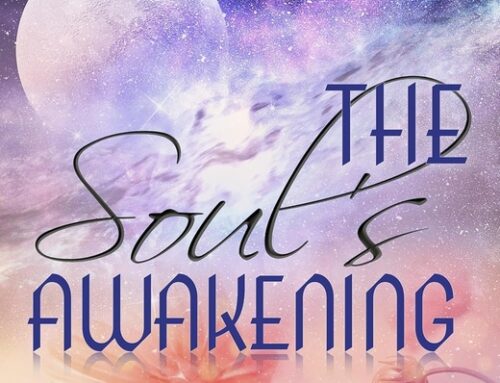
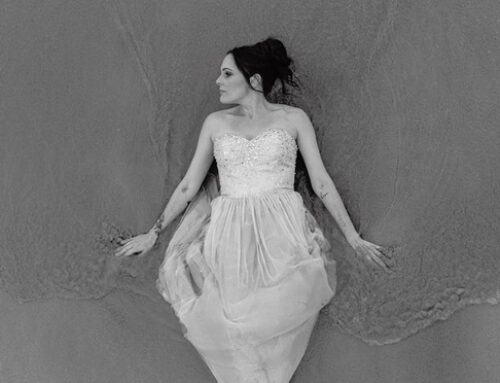
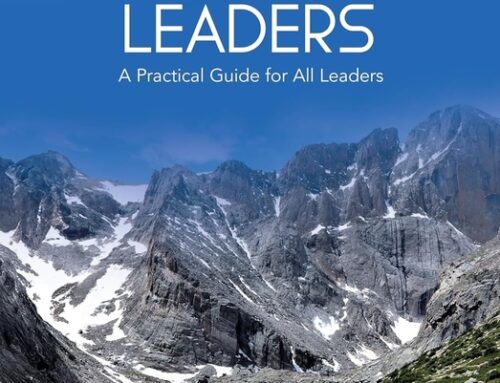


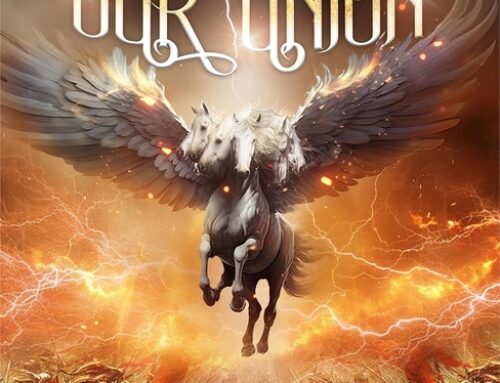
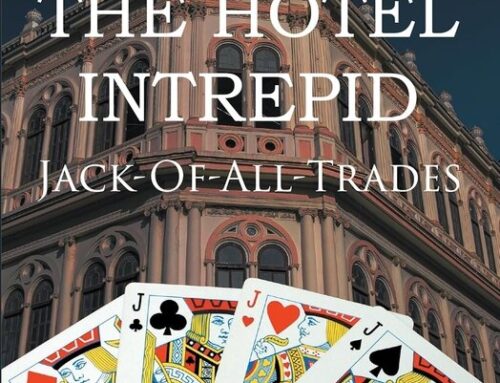
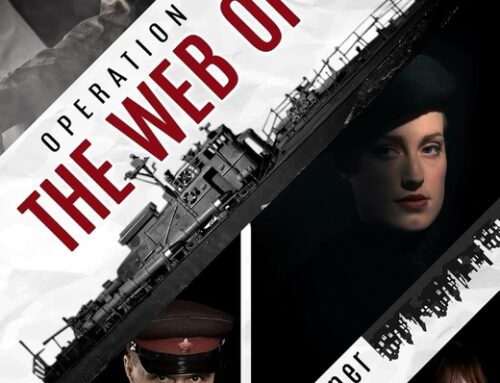

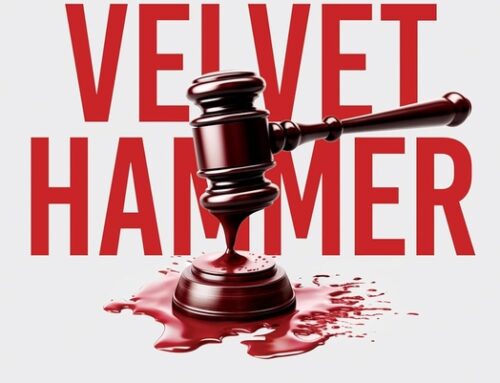

Christopher, I hope your Love at Absolute Zero does well. Your points under “What to Do” are good ones. Writers can spend a great deal of money, time, and/or effort on all of them, though, and still not achieve the commercial success they want. A cultural thing runs through it. Fifteen or so years ago I never would’ve dreamed a YA vampire series would make the author incredibly wealthy and famous. So another author comes along with a YA paranormal series and becomes wealthy and famous even as an independently publishing author. Good for them, but I’ll be damned if I’ll have anything to do with supernatural YA’s, either as a reader or a writer.
Ron, you’re absolutely right in saying “Writers can spend a great deal of money, time, and/or effort on all of them, though, and still not achieve the commercial success they want.” As writers, we all want the secret formula to a great career. If we get a publicist, will that do it? Do we need to be friendly on Facebook and write about what we just ate? Will that bring sales? It’s as if we’ve somehow managed to find the secret formula to writing a great book, and now we can apply it to marketing. The truth is, doing nothing does nothing. In both writing and marketing, the only thing that may possibly work is give best, honest efforts. Sometimes the magic works.
As for “Love at Absolute Zero,” I had a great first day, and the book reached into the top 2800 of Amazon books. A week later, I haven’t been able to recreate such a day. I’m again looking. Word-of-mouth is always a hope. Who will discover the delights of Gunnar Gunderson first?
I’m also figuring there are readers who want an option to Supernatural YA.
All your points are good, but I have 13 books published with their adjunct ebooks and it’s only the ebooks which are doing well. It seems that hardbacks and paperbacks are dead unless you buy at your local bookstore, and with so many of them closing it’s hard to balance publishing with promotion and strike the right chord. For my part I am also battling negative publicity generated by people who have never read my books but who judge me as inferior nevertheless simply because I am self-published. As far as I am concerned they are not qualified to even talk about it if they have never experienced the freedom and the challenges of being self-published, and I don’t have to accept it. we self-published authors must soldier on as we have been, and soon there will be no demarkation line between the two worlds.
Hi Christopher, you use Teddy Rose’ Virtual Author Book Tours. So do I! I love her services. She is great.
Be wary of Goodreads. It is kind of a cesspit. That the reason I left.
Theresa and Melisa, thank you for your notes. First, Theresa, while I haven’t received any campaign of negative publicity, I have seen a great deal of indifference to eBooks. When I started White Whisker Books almost seven years ago, eBooks were not even noticed, so my first book was printed on demand. I used the traditional channels as well as emerging literary blogs to get noticed, and it worked.
By the time of my third book, my novel THE BRIGHTEST MOON OF THE CENTURY, I had solved the bookstore dilemma–my books were in bookstores–but also eBooks had become a huge force. That was my first book where eBook sales were more. When I received a truckload of returns (around 50% returns) from the bookstores, my eyes opened. One could go bankrupt from great reviews.
I recently attended the AWP Conference in Chicago where I had a huge realization. Ten thousand attendees strong, here was a major group of writers, creative writing professors, and writing students, and the subject of eBooks were on none of the panels. During meals and breaks, I saw members reading books on Kindles, Nooks, and iPads, but then this powerful force was not spoken about. I wrote about it in the following article: http://redroom.com/member/christopher-meeks/blog/success-awp-and-a-growing-huge-problem
The point is that self-publishers and small publishers may as well be at Hogwarts: no one sees you, even if you feel empowered. Still, a modest living can be made with eBooks. I’m happy to say that the books of one of the authors I’m publishing, E. Van Lowe, are selling more and more books each month. We should reach 2000 books of his sold this month, and a prominent producer wants a meeting in regards to movie rights. It’s not a done deal, but it shows me how doing-it-yourself can lead to good things if quality is something you obsess over. (You can see more about his books at http://www.WhiteWhiskerBooks.com)
Melissa, I found Teddy Rose wonderful for a blog tour. She, too, pays attention to details. I’m also finding that Goodreads ads, while not particularly effective at selling books, is a fabulous way to try out short pitches for your book. If you use the ads to experiment with different pitches, you’ll find the one that people really click on. Use that one for your Amazon page.
Hi Christopher!
Goodreads is a really great way to get the word out about a book. It is a good way to get recognition but as you said, it is not a good way to actually sell books. My take on this is because most people who use Goodreads are people who read ALL THE TIME. And I mean all the time. They are book-a-holics who usually have blog. The thing about these people is that they are used to getting their books for free. That is how they can read so much. So this is my theory on why Goodreads is not very effective at actually selling books.
What do you think?
Melissa, if I weren’t so busy writing a novel now, I might write about what I’ve learned about Goodreads in a long article. I love Goodreads for the passionate readers I find there. While most reviews are the Amazon variety, i.e. quick short responses, there are some people who are writing newspaper-reviewer quality criticism, long and conscientious pieces. I’ve found those are a wonderful source for blurbs and Twitter links.
The Giveaway part of Goodreads is unmatched–better than LibraryThing, which isn’t bad. I’m on my tenth and last giveaway for LOVE AT ABSOLUTE ZERO right now, which ends tomorrow for one of three signed copies. Each giveaway draws about a thousand people. The cost of a giveway is the cost of the book and postage–very cheap for advertising. (Go to http://www.goodreads.com/giveaway/enter_choose_address/22243?utm_medium=api&utm_source=giveaway_widget)
Also, participating in the threads or commenting on reviews draws interest. I now have fans and friends on Goodreads. I like the place. While the ads don’t sell books immediately, people are putting my book on their “to-read” list, so it may end up with sales.
The main thing to remember in doing this is to be patient. We are not big publishers with big pockets, but we have time and grassroots on our side.
Good job! Yeah, it really is a great way to get new of your book out to people. Good for you! I really hope it spurs sales. And you’re right. We don’t have the big pockets of publishers behind us. But now, time is on our side. =o)